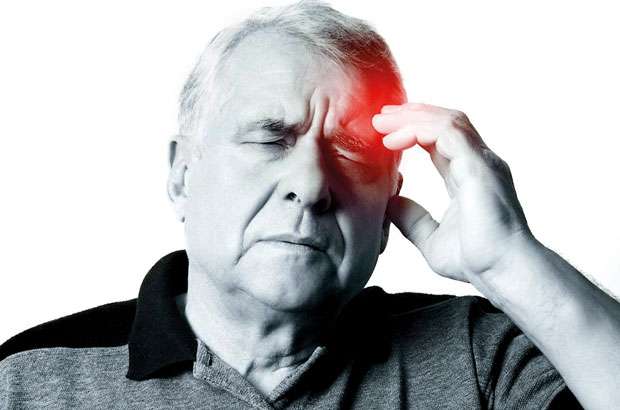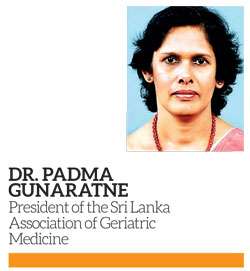14 Sep 2018 - {{hitsCtrl.values.hits}}

 We are constantly entangled in our busy lifestyles that we often forget to have some time for ourselves. Indulging in a healthy meal, taking some time off to warm up your body or to relax your mind have become challenging tasks. In fact, we don’t bother about these lifestyle goals at all. As a result, people may develop unhealthy habits such as drinking or smoking. But have you ever thought what would happen if you are paralysed all of a sudden? Or what if you lose your consciousness? As these are potential signs of an upcoming stroke, it is always better to know what you or those around you should be doing next.
We are constantly entangled in our busy lifestyles that we often forget to have some time for ourselves. Indulging in a healthy meal, taking some time off to warm up your body or to relax your mind have become challenging tasks. In fact, we don’t bother about these lifestyle goals at all. As a result, people may develop unhealthy habits such as drinking or smoking. But have you ever thought what would happen if you are paralysed all of a sudden? Or what if you lose your consciousness? As these are potential signs of an upcoming stroke, it is always better to know what you or those around you should be doing next.
With that in mind the Health Capsule spoke to Dr. Padma Gunaratne, President of the Sri Lanka Association of Geriatric Medicine to find out the causes, symptoms, diagnosis and treatments administered in the event of a stroke.
What is a stroke?
A stroke falls into the category of a non-communicable disease and it could happen due to our lifestyles or it could be inherited. In 80% of the cases, a stroke occurs when the blood supply to the brain is impaired. Blood vessels could get blocked due to atherosclerosis thus reducing the elasticity of the walls. This builds up a pressure within the blood vessel damaging its inner walls. Hence a blood clot forms and would block the blood vessel or it would block a blood vessel in a different area. Due to this blockage, a blood vessel has a tendency to burst.
These lifestyle-related factors could in turn contribute to obesity and other conditions such as diabetes, high blood pressure, high cholesterol which could increase a person’s vulnerability to develop heart diseases or a stroke
Causes 
According to Dr. Padma Gunaratne one cause of developing a stroke is due to ageing. “In 30% of the cases, strokes occur in people less than 60 years of age. Hence it could be prevented if adequate precautions are taken. In this case there are modifiable and non-modifiable factors contributing to the development of a stroke. Modifiable factors could fall into two categories; lifestyle and disease-related.” Lifestyle factors include : Unhealthy diet, lack of exercise, smoking and the excessive intake of alcohol.
“These lifestyle-related factors could in turn contribute to obesity and other conditions such as diabetes, high blood pressure, high cholesterol which could increase a person’s vulnerability to develop heart diseases or a stroke. Non-modifiable factors include genetics and hereditary characteristics. Heart diseases also increase the risk of developing a stroke. In addition to that if your heart vials are affected for example due to rheumatic fever, the heart vials will be damaged and will develop clots. This in turn would also lead to a stroke. If one experiences a rhythm problem there is a possibility to develop a stroke at a young age,” she added.
Symptoms
Dr. Gunaratne further said that at the onset of a stroke there are few prominent symptoms which a patient has to be aware of. These include :
Prevention
Prevention could be primary and secondary. If one develops a stroke they should; stop smoking, reduce the alcohol intake, have a healthy diet and increase consumption of vegetables and fruits. They can also do the following-
After a person develops a stroke, both the patient and those around him or her are usually aware of how things should be done. In terms of secondary prevention the following could be done :
Speaking further, Dr. Gunaratne said that a person could be doing anything at the onset of a stroke. “In most instances they would say that they were alright until they realised that half of their body got paralysed. It happens suddenly and therefore you may not have much time to react. After the stroke the physician would after informing the patient investigate as to how the symptoms developed thereby keeping a record of the patient for future reference.”
Diagnosis and treatment
She further said that studies have shown that one in 100 people in Colombo and suburbs have suffered a stroke. “Anybody should be able to recognise a stroke based on the previously mentioned symptoms. In fact these symptoms arise all of a sudden. Usually we ask the patient what he or she was doing before the stroke occurred, the time it occurred etc. During a heart attack, the blood vessels that supply blood to the heart get blocked whereas in the case of a stroke, the blood vessels supplying blood to the brain get blocked. Hence we do a CT scan to see if they have bled into the brain. It is important to take a patient to the nearest hospital equipped with these facilities in order to prevent the chances of developing a second attack since the risk is high.
“If internal bleeding has occurred, there will be a different treatment. But if blood vessels are blocked thrombolysis is conducted within four and a half hours to diffuse the blood clot. In order to experience maximum benefits, it should be given as early as possible. Once a patient is bedridden, he or she needs to be taken care of. If not such patients are exposed to the risk of developing other conditions such as pneumonia, bed sores and may even be dehydrated as they cannot swallow anything. Hence the management of patients is done by a team of experts including the doctor, nurse, physiotherapist, occupational therapist, speech and language therapist, a counsellor and a social service officer.
22 Dec 2024 3 hours ago
22 Dec 2024 3 hours ago
22 Dec 2024 6 hours ago
22 Dec 2024 6 hours ago
22 Dec 2024 6 hours ago